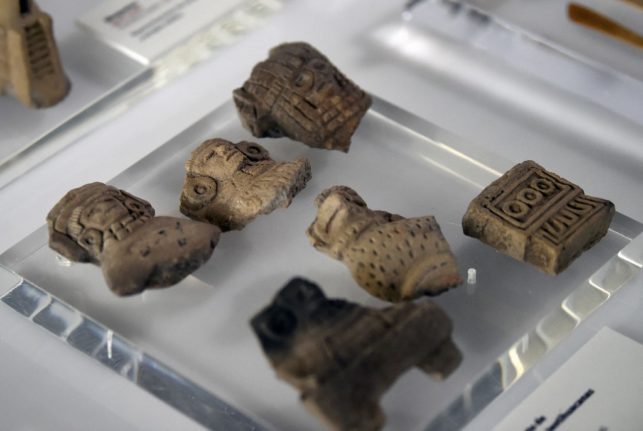Carved stone figures, arrowheads and ceramics are among the items handed over by an unnamed family in Barcelona that will be exhibited at Mexico City’s Templo Mayor Museum.
“Mexico’s archaeological and cultural heritage is being recovered abroad… thousands of archaeological pieces that had been stolen,” President Andres Manuel López Obrador told reporters.
Since López Obrador took office in December 2018, 8,970 artifacts have been recovered, mostly in Europe, according to Foreign Minister Marcelo Ebrard.
Auction houses and foreign governments usually ask Mexico to prove that the pieces belong to it, Ebrard said.
But in some cases, the Mexican government has successfully argued that sellers must prove the items’ legal origin, he added.
Some pieces have been recovered through police raids, such as in Italy in 2021.
Belgium stopped an auction in March at the request of Mexico.
Some museums and individuals have also voluntarily returned artifacts, although efforts have been less successful in certain countries such as France, whose auctions López Obrador has branded “immoral.”




 Please whitelist us to continue reading.
Please whitelist us to continue reading.
Member comments